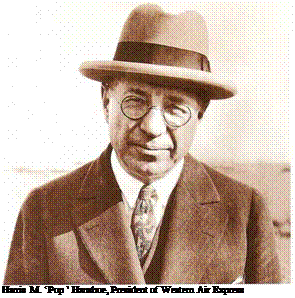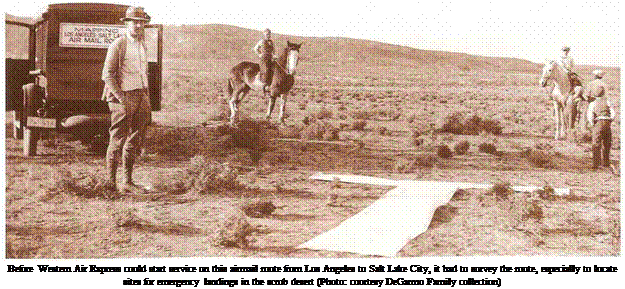Post Office Prelude


![]()

A Delayed Beginning
The United States airline industry started to take shape only in the mid-1920s, several years after Europe, Australia, and some countries south of the Border. There had been sporadic attempts to establish individual airlines, notably by Aeroma – rine in Florida and the Great Lakes, from 1920 to 1923; but others survived for only a few months. The U. S. Post Office had pioneered a transcontinental route from New York to San Francisco. But no sustained passenger airline existed.
The Kelly Act
Then, on 2 February 1925, the Contract Air Mail Act (known as the “Kelly” Act, after its main Congressional sponsor) transferred the responsibility for carrying the air mail from the Post Office to contracted carriers. On 20 May 1926, President Coolidge signed the Air Commerce Act, which established a regulatory framework within which the airlines could operate.
The Post Office’s Air Mail Service had grown to a stage which demanded the talents and experience of a transport organization—attributes that were considered to be outside the field of a governmental agency. The air mail routes were contracted out to private companies or to entrepreneurs who undertook to provide regular and reliable service and were paid for the service rendered. Beginning with twelve contracts let, after open bidding, in 1926, all the main cities of the United States were receiving air mail service by 1933.
T. W.A.’s Pioneering Ancestry
All the major airlines of today can trace their history back to these early beginnings. T. W.A. has a legitimate claim to be one of the true pioneers. Its ancestry began with Western Air Express (W. A.E.) which was founded on 13 July 1925, and began service on 17 April 1926. United Airlines’s ancestor, Varney Air Lines, made a flight on 6 April, but did not fly regularly until 6 June. American’s earliest ancestor, Robertson Aircraft Corporation, carried mail from 15 April, but did not at first carry passengers. Delta, too, by its acquisition of Western Air Lines in 1987, has a legitimate claim to W. A.E. ancestry.
The Innovator
Of the developments that followed the passing of the Kelly Act, T. W.A.’s were the most impressive, in that it first initiated, then sustained, and by subsequent innovations, radically directed the course of the United States airline industry during its vital formative years. And most important, these innovations proved to be of inestimable benefit to all the airlines, including T. W.A.’s competitors.


Western Enterprise
Air Mail Contract No. 4 (CAM 4) was awarded to Western Air Express (W. A.E.) of Los Angeles. Promoted by Harris ‘Pop’ Hanshue, a former racing car driver and car dealer, the airline was founded on 13 July 1925, with the backing of Harry Chandler, of the Los Angeles Times, and James A. Talbot, of Richfield Oil. With such sponsorship, it was a company of substance and enjoyed much local political and corporate influence.
W. A.E. began air mail service on 17 April 1926, from Vail Field, Los Angeles, to Salt Lake City, via Las Vegas. It connected with the established transcontinental route from San Francisco to New York, still operated by the U. S. Post Office. Hanshue aspired to winning that contract too; but lost out to Boeing Air Transport, which received the San Fran- cisco-Chicago contract in 1927.
Passengeiyservice was added on 23 May 1926. During the next seven months, 209 brave travellers paid $90 each to make the journey. They sat in an unheated and only partially protected cockpit, and were regarded as of secondary importance to the mail, which sometimes doubled as seating cushions. With no restrooms onboard, rest stops occasionally were made in the Mojave Desert. The one-way trip took 6-1/2 hours.











